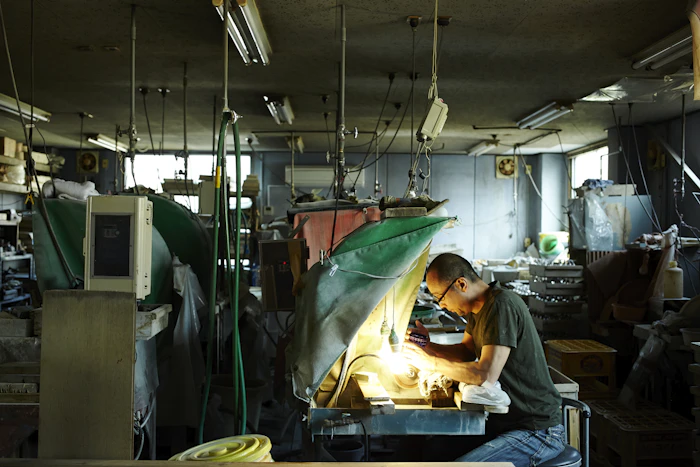
Recently, I've felt a growing desire to carefully reconsider the objects around me. I find myself particularly drawn to Japanese traditional crafts, where one can feel the artisan's spirit and the passage of time.
The other day, I happened upon a single glass in a craft store in Tokyo. It was an Edo Kiriko piece, with delicate cuts that sparkled brilliantly as it caught the light. When you learn about the history and culture behind such an object, it ceases to be just a "thing" and becomes something truly special. But where exactly does this brilliance come from?
The Birth and Journey of Edo Kiriko, a Glass Craft Born from Edo Chic
The origins of Edo Kiriko are traced back to 1834, late in the Edo period. It is said to have begun when Kagaya Kyubei, who ran a glassware shop in the Odenma-cho area of Edo (modern-day Tokyo), used emery powder to carve designs onto the surface of glass. Japanese craftsmen added their own unique ingenuity to glassware introduced from overseas, allowing it to develop into a distinct form of glass art.
Since then, the craft has survived several crises, its techniques carefully protected and passed down by artisans. In 1985, it was designated a Traditional Craft of Tokyo, and in 2002, it was recognized as a National Traditional Craft of Japan. Its history and artistry continue to be inherited to this day.

This article is for members only.
Please register to read the rest of the article.
What you can do with a membership
- Read members-only articles
and use text-to-speech. - Unlimited article favourites
and browsing history. - Attend members-only events.
- Get the latest information
with our email newsletter.

.png?w=400&fm=webp)

![[No.4]The Secret to the Expressive Techniques Only Living National Treasure Akihiro Maeta Can Create](https://images.microcms-assets.io/assets/1775a3633c8b428d9f011c6a758a8a5c/9c7bdfdde79840788867596b54617615/OGP4.JPG?w=400&fm=webp)

